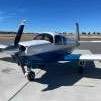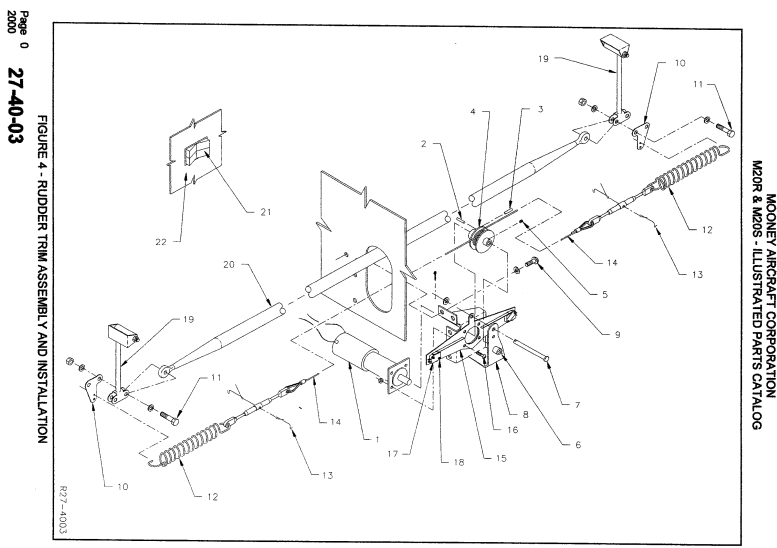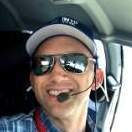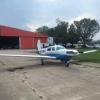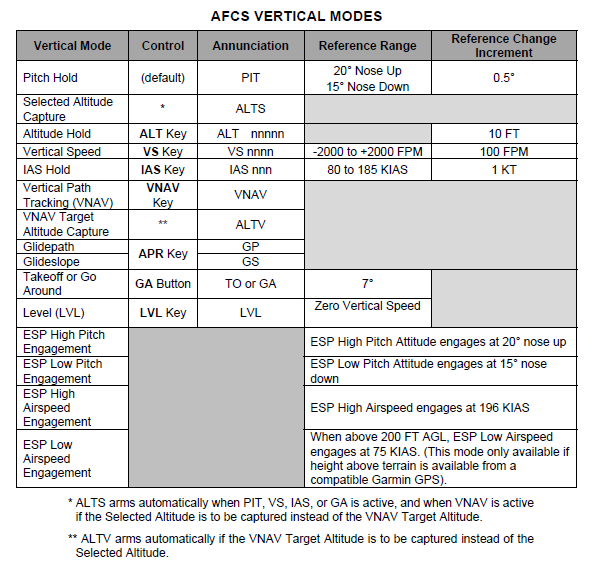Search the Community
Showing results for 'GFC500'.
-
I'm a week out from dropping off my 1989 J model to start its panel upgrade. The before picture is below; I'll have a separate post in a few weeks in the Classified section for anyone interested in legacy equipment that's being removed. I plan to post updates as the avionics shop makes progress. The project includes GFC500, G500TXi, GI275 backup, GI275 EIS, GTN650Xi, GNX375, GTR205, yoke Aera 760, Carling switches, Cies senders, LHS, and LED nav/strobe. Many thanks to @donkaye @shawnd @Lois @201 RedTail for sharing their panel experiences and providing advice during the planning stage. John
-
Does anyone have insight on what Garmin is up to this year? I ask because there hasn't been a new software release for the G3X Touch in 5-6 months for either the STC or experimental s/w. I've had mine since September 2023 and had done 3-4 updates, one about every other month or so, through September 2024. And now nothing. This was during the period of addressing the GFC500 servo issues but they were also migrating other capabilities from the experimental s/w. I'm hoping to see more of that, most notably the EIS normalize mode and programmable dynamic engine instrument indications (that one's a stretch, I know). I'm wondering if there is any activity on the G3X software development team. Or is there something else in the mill that is getting the development effort focus? I'm not looking for speculation. I'd like to hear from someone who can share any available non-IP first hand info on what Garmin has in store for us.
-
- 1
-

-
I'm having a strange issue with my trim and I am having my A&P look at it, however I wanted to the hive mind input to see what specific recommendations for my mechanic to follow, as he isn't sure what is going on either. The issue is with the trim/elevator behavior during landing. As you know, as you deploy flaps in the Mooney, it pitches the nose downward. So with every notch of flaps I deploy (or pumps, as it were,) I pull the yoke back to compensate for the pitch down, and trim off the pressure. Around the second to third pump, after I pull the yoke back, I try to trim off the pressure but the pressure doesn't release. I give it a couple partial turns of the wheel as I am used to, but nothing happens. Then a few seconds later, the yoke/elevator abruptly releases the pressure and it can be startling. Everything during preflight as far as controls feel like they are working properly. They are free and clear and move smoothly. The trim wheel moves normally. This behavior just started a few months ago and hasn't seemed to have gotten better or worse. It doesn't matter if I manually adjust trim using the wheel or use the trim servo of the GFC500 system. The empennage behaves normally with the trim adjustment on the ground as does the elevator movement. However, I am suspecting that maybe the elevator bungees have something to do with this issue?
-
@warrenehc to answer your question: Bravo rudder trim is independent of the KFC/Autopilot. If you install the GFC500 with Yaw Damper, you should be able to leave the rudder trim in place. However GFC500 pitch trim servo replaces your existing King electric pitch trim as that IS part of the autopilot. Long body rudder trim has L brackets (#10 below) attached to the ends of the bell cranks. There’s a spring tensioned wire (#12/13/14 below) that’s attached to the brackets that’s wound around the rudder trim servo wheel (#4 below). In these installs the Garmin YD on the GFC500 mounts differently and allows retention of the Mooney rudder trim. However on a few midbody Mooneys (I.e. the Encore) Mooney used the S-Tec rudder trim/yaw damper that can add a YD and rudder trim to the aircraft but still functions independently from the KFC autopilot. Those are also installed in the same location that Garmin GFC500 YD is installed, so must be removed to install GFC500 with YD. The interesting thing is that looking at a handful of IPCs for other midbodies including my own, and comparing to the Bravo for example…I think that the parts for the long bodies are same part numbers on the K and likely one could easily take a long body rudder trim and add it to the midbodies…if you had approval from Mooney to do so. Of course you don’t really “need” rudder trim for smaller engine/lower HP Mooneys. Just saying it looks like rudder time appears somewhat universal among Mooneys out side of the S-tec YD/Rudder trim units.
-
Figured I would poll the audience as to whether this is an appropriate strategy for a panel upgrade. I am a new VFR pilot, doing night and IFR ratings in the next year. My immediate goal is to have a better autopilot for long cross country and improved engine monitoring. I have considered Dynon however I do not like the idea of keeping my legacy STEC Pitch trim as would be required. Current: Steam gauges, GNC530W, Century IIB, STEC 60 PSS, GTX335, GMA340, KX170B, JPI700 Future Goal: G3X G5 GFC500 GTN650 (or GNC355) GNC215 GMA345 (for bluetooth) Interim Solution: Keep current gps/nav/comm units. Just do the G3X, G5, GFC500 (3 axis, hold off on yaw damper until stage 2 upgrade). Then plan for remainder of panel down the road.
-
I just had my panel upgraded to a G3X (with EIS) + G5 + GFC500 (4 servos) + GMA245R audio box (I have posted some pictures on a different topic). Budget constrained me to keep my ancient GNS430 (non-W), KX155 nav/comm2 and old transponder (no ADSB mandate in Brazil yet). I am a PP IFR-rated and had most of my flying done on piper analog planes (archers and arrows). However, my IFR was all on a C172 G1000. So the GNS430 was very familiar albeit way less capable than the G1000. Some takeaways: G3X is incredibly capable and easy to operate. If you use Garmin Pilot on the iPad, the buttonolgy is seamless. Digital EIS is a must! Being it a G3X or any other brand (JPI, for example), the ability to carefully monitor and add advisories to the engine instruments brings a whole new level of operational awareness and a higher sense of care for your engine. Also, the ability to download the data (or reviewing it in Garmin Pilot) is incredibly valuable. Those who say you don't need YD have not flown with one on a turbulent warm day with the wife complaining that she's getting sick . I was one of those guys... I am SO glad I added YD. But this is personal: I wouldn't have traded my YD for a new NAV/COMM. GFC500 is amazing. Very stable and comfortable ride even in very choppy air. Makes you kinda feel like a Boeing pilot (configure the FD as dual-cue and you can almost smell the jet fuel). G3X will not talk with old NAV/Comm, so I had to keep an old analog CDI for NAV2. Even though my GNS430 doesn't have VNAV, the G3X has a very basic Vertical Navigation calculation function and it will work with any waypoint prior to the FAF. The GFC500 will even follow the vertical profile. But it is on a waypoint-by-waypoint basis. So the "Cross 10nm before XYZ at 5000 feet" instructions is a breeze.
-
Assuming you upgrade to the GFC500...rudder trim will fight the YD on the GFC500. Meaning if you turn on the AP in climb and then in cruise you don't disconnect the YD and center the ball again, the YD will (may) eventually disconnect the AP until you fix it, I have gotten to where I shut off the YD and just center the ball using rudder trim.
-
I probably have the same setup as others here, with the G3X+EIS+GFC500+GTN, but honestly I would think seriously about knocking out your night+IR training with the panel you know. The GNS is a perfectly capable unit, and while a newer AP might be nice for instrument flight, it's not very important for IR training. You'll probably do better with a super-familiar panel for your instrument training, and you can tackle the panel upgrade after you have the rating.
-
VNAV is a vertical mode for descent. A classic case is a standard terminal arrival with stepdowns. But you can use it to set up a vertical constraint for 1000'AGL at 5nm from the airport, or set up fixes before each of the "layers" coming in under a Bravo so that it will automatically sequence descents to stay below airspace. You can also use it to automate stepdowns given by ATC "proceed direct FIXXE, cross FIXXE at 5000 feet". VNAV is calculated by the GTN. But the GFC500 just has a mode to follow this path automatically. These are two good videos to watch to familarize yourself with VNAV.
-
I flew n6036x and put 32 hours on it immediately following my ppl. I found it at an auction in a tiny town in BFe. Took about 5k to ensure airworthiness. Loved the plane, didn't have adsb and was 100% stock panel. You can't put gfc500 in it. Honestly if it was able I'd still be flying it. The wood wings never scared me. Now that I have 350 hours on my C with modern panel. I loved the A. It needs a hanger and you need someone with some knowledge of fabric and wood. I even had a spare wing to go with mine. Last I knew a&p had it in NC. Dunno what happened to it.
-
Aerocruz 100 for Mooney Ranger
hammdo replied to Fysiojohn's topic in Vintage Mooneys (pre-J models)
The aerocruze should have a built-in one. GFC500 requires a G5 G5 provides a ‘heading and alt hold’ mode using the bugs when in External mode on the AeroCruze… -Don -
Gonna ask a dumb question here, but..... Does the AeroCruze 100 include an internal inertial (micromechanical gyro) package for stability control? And does the Garmin GFC500 rely on on external inertial package? (say, provided by a G5?)
-
Aerocruz 100 for Mooney Ranger
hammdo replied to Fysiojohn's topic in Vintage Mooneys (pre-J models)
Duncan is shipping my kit out today! For those curious, I purchased the flat pack. The price included a 3% cc fee, $200 STC fee, and sales tax so the total was $7926.77 (~$22 for shipping included). The Garmin GFC500 was priced at $11930.50 ( not including shipping as it depends where it is shipped from) for a 2 axis kit for comparison… The installation price is the same for both per my avionics shop - currently for my plane at around $4500.00 Garmin: $16430.50 installed NOTE: I already have G5 and GNC 355 so that cost is not included. The G5 adds about $4K to $5k more for a single G5. AeroCruze: $12426.77 installed. G5 is optional but I would want it too… Overall, ~$4000 difference -Don -
Instrument Panel Switch Replacement
CCAS replied to Speed Merchant's topic in Modern Mooney Discussion
@Lois Ted - Is the silver button (with blue LED) surround above your throttle your Go Around button? If so, that's about the cleanest looking (and most substantial) TOGA button I've seen for the GFC500. Do you have a part number and supplier? Thanks John -
I'll agree and disagree. When I bought mine it had no autopilot and because it began life as a D model didn't even have the wing leveler. Flew it for over 500 hours all around the Southwest with a trip to the East Coast thrown in there for good measure. At the time I didn't know any different as I had never flown with an autopilot and was just happy to have a plane. Once the GFC500 was approved I got it in a shop and had it added. Now with probably 600 hours flying with an autopilot I never want to go back.
-
For those of you with the GFC500 AP, how many of you have already had to replace the servos with Mod1 servos? If you haven't had issues (but have affected SN servos), when are you planning on getting the servos replaced...do you replace them now, towards the end of the warranty period, or a specific time in between? From the service bulletin you have until 5/4/2028 to have these replaced under warranty. https://support.garmin.com/en-US/?faq=y ... iNr8uLLUA6 GSA28 extended warranty service bulletin info link if you need it. From Garmin FAQ: How will my Warranty be impacted? The standard warranty applies after the exchange of the servos. 6 months after the exchange OR the balance of your existing 2-year warranty applies, whichever is longer.
-
@sandeepdutta This is probably one of the better deals out there for a k right now. This plane was the first Mooney I ever logged hours. It was owned for a long time by an instructor that I know and was well cared for. he sold it a few years ago and the new owners did some significant upgrades. im not sure why its hasn’t sold yet, I think it could be had in the 165 range and has all the big stuff done. Paint scheme isnt thrilling, but it’s clean, well kept, low time engine, intercooler, Merlyn waste gate and a gfc500 https://www.trade-a-plane.com/search?category_level1=Single+Engine+Piston&make=MOONEY&model=M20K+231&listing_id=2428328&s-type=aircraft
-
The AFM supplement for the GFC500 for a M20M (shown below) says TOGA establishes a 7 degree nose up pitch. I thought I had a scan of mine but can't find it right now. Calling it Vx was inaccurate on my part, although I believe it produces performance close to that at full power, but I do know it is referencing pitch, not airspeed. In my plane it's enough nose up pitch to startle passengers who are not expecting it and is more nose up pitch than I like to use on a standard climb-out for sure.
-
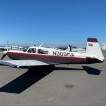
Garmin GFC 500 Autopilot Flight Overview
Marc_B replied to Rmag's topic in Avionics/Panel Discussion
In my aircraft with GFC500, it seems that the pitch for TOGA is somewhere between Vx and Vy and closer to best glide coincidentally. If anyone is aware of design intentions or how Garmin determined default pitch for the airframe I’d love to learn more! but TOGA is a mode meant to get away from the ground and not a “flying” mode…meaning I quickly switch to a IAS mode for climb in the climb out. -
Nice post. I don't like to use the TO/GO for a normal takeoff though. The attitude it provides to give Vx, while what you want on a go-around in IMC, is too nose-high for a normal departure. It also then requires that you re-configure the autopilot entirely for your first turn - You must press HDG or NAV, then VS or IAS, then dial in your preferred VS or IAS on the wheel, then press "AP", all while possibly bumping around, entering IMC, talking to ATC, etc. Instead I prefer to configure the autopilot to fly my planned departure, which means flight director on, heading mode engaged, heading set to runway heading, vertical speed set to 500+ FPM, altitude bug set. This allows me to follow the flight director and heading bug on takeoff manually until 500 feet AGL, then engage the autopilot and be fully configured just by pressing the "AP" button. Also passing 500 feet AGL I will roll the heading bug over to my assigned heading, or enter NAV mode to go on-course, whichever is appropriate. An alternative to this is instead of HDG, to leave it in ROL mode, and pre-set your heading bug to your assigned heading if you have one. So when you begin your first turn and press the AP button, you just also press HDG and you're configured and don't have to remember what your assigned heading was during takeoff. This maybe works better and removes one item you have to remember (your assigned heading), but I like having the heading bug available to follow to fly runway heading, in addition to the flight director, which in this scenario is not actually tracking runway heading. So for me, the TO/GO is more of a GO button. But I'm curious to hear if anyone sees issues with what I've developed above as my practice or does it differently. A note - I had to add each of the autopilot configuration steps to my pre-taxi checklist to start getting it all right, after the GFC500 was installed. Highly recommend that to anyone learning this new autopilot - there are a lot of configurations you can make on the ground to make your life easier right after takeoff.
-
As an update to this thread, I chose to have the GFC500 autopilot installed in the Ovation instead of having it painted. The install also includes a GI 275 backup attitude indicator which, I believe, actually drives the autopilot. It should be done in February sometime along with the complete fuel tanks reseal. It will replace the current King KFC150 autopilot/ servos and the L3 backup attitude indicator which will be for sale. I view it as an important safety upgrade and it will completely integrate with the G500 TXi PFD and the GTN 750 navigator. Pictures and a post when I pick it up. Thanks all. PS. Lance….having all the work done in Texas! I’ll send a note when it’s time to pick it up. KGGG
-
Garmin GFC 500 Autopilot Flight Overview
William Munney replied to Rmag's topic in Avionics/Panel Discussion
I know it’s an old thread but still a very good video. And, the GFC 500 isn’t going anywhere. In fact, I am having one installed next month in the Ovation. A few things from some experience with auto flight systems: If you have the TO/GA button (Pronounced “toe-guh”) you should use it for takeoff in (TO/TO) to a safe altitude before you select your roll and pitch modes. Especially during a low visibility takeoff. What is safe? Probably 500-1000’ above the airport. ATC understands this. You activate the TO/GA button as you apply takeoff power. You are essentially commanding wings level and a pre programmed pitch attitude to the safe altitude before selecting your roll and pitch modes. On the go-around the sequence is to press the TO/GA button as you add go-around power commanding the autopilot roll and pitch modes to GA/GA (wings level and a pre-programmed pitch attitude)…..at positive rate, select gear up……then cleanup the aircraft. At a safe altitude, select GPS sequencing and then select your desired roll and pitch modes. You do not want to be goofing around with autopilot modes close to the ground. Select TO or GA as needed and fly the command bars to a safe altitude before selecting other modes. VNAV makes life great if you know how to use it. Practice VFR first. Also, VNAV on the GFC500 only works to the FAF. Use APPCH for approaches with vertical guidance: LPV, LP+V, LNAV/VNAV, LNAV+V, ILS. I think the visual approach’s in the GTN works too. Use NAV for approaches with no vertical guidance. When you are “cleared for the approach”, you can select APPCH (for approaches with vertical guidance). This arms the approach to become active when parameters are met. Be VERY careful NOT to select APPCH for an ILS unless you are within the service volumes for the localizer and glideslope. False localizers and glideslopes are possible. Every time you select an altitude, or a roll or pitch mode on the GFC 507 autopilot control head, you MUST verify your selection on the FMA’s (Flight Mode Annunciators…..or, the “scoreboard”) because THAT is what the autopilot will fly. DO IT EVERY TIME. More than a few aircraft have been lost because of autopilot mode confusion. If the autopilot is doing something you don’t understand turn it off and fly the airplane. There are NO EXCEPTIONS to this rule. DO NOT just push buttons and watch the autopilot to see what it will do. Know what modes you are in and what modes are armed and anticipate the changes to the FMA’s before they happen so you can anticipate what the autopilot should be doing before it does it. You will then know immediately if it’s not doing what it’s supposed to be doing. Finally, flying airplanes on automation is a separate and important skill from hand flying airplanes. It requires a lot of study and practice as your job is now translating ATC instructions into commands that the autopilot understands. Ultimately, you should be able to engage the automation a few hundred feet after takeoff, fly to your destination on automation and disengage it a few hundred feet from landing. After you can do this, use it at your discretion. Autopilots can be a powerful safety tool or another very real danger in the cockpit depending on the user. Hope this helps someone. -
Finishing up a panel upgrade including a gfc500 which is replacing a century IIB. After removing the old AP control unit I’m left with a hole in the center stack that I’d like to repurpose as a cubby of sorts. Wondering if anyone has any files or designs for a tray I could place in there as opposed to simply blocking it off. Thoughts behind the cubby would be to place cell in there when being charged by USB port just above in the panel. Photo attached here
-
@Larry I upgraded my G500, GTN750, and GTN650 with the install of a GFC500 + G5. Shop didn't want the ESI500 standby that was in the aircraft, but took the legacy Garmin equipment in trade for discount. I think that Sarasota quotes 9.5k for the upgrade (edit: this doesn't include labor). Unfortunately I don't have the exact amount for a simple switch of the GDU. But I do think that some parts can be reused with the upgrade. My shop switched everything so mine came with new ARHS/ADS/GMU44. But backtracking things out I think I was around (edit) more like 14k with install costs...but new panel and lots of other work really blurs what would be charged with just a swap/rewire. Mine included previous enablements and new equipment. I'd recommend reaching out to your avionics shop for an estimate. I used Advanced AeroTech Group and I'm sure they'd help you with an install and estimate.
-
Just for comparison, I’m finding numbers on the order of $20K to install the Garmin GFC-500. How much cheaper are we expecting the Aerocruz 100 to come in? (Assuming it ever will come in.) FWIW, a local shop thinks a DER install of the Aerocruz may be possible. But it may be better to just bite the bullet and get the one we know works and will be supported. https://avionics-laf.com/products/garmin-gfc500-autopilot-installed and useful thread below



